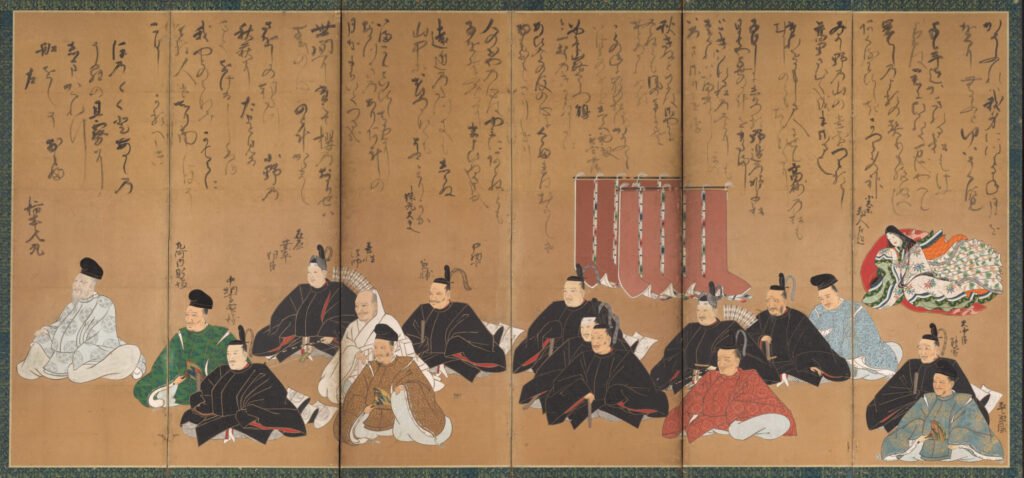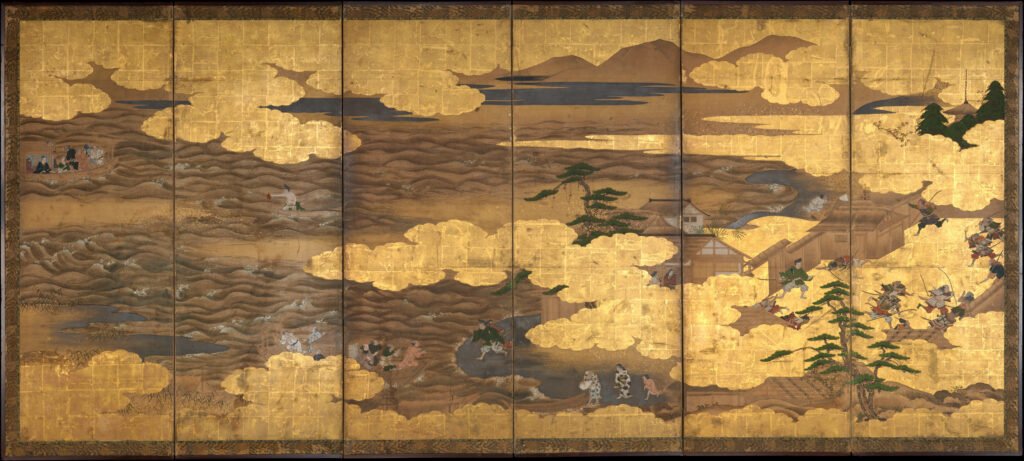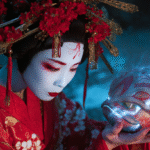Traditional Japanese design encompasses centuries of aesthetic philosophy, embodying concepts like seasonal awareness, reverence for nature, and the distinctive principles of “wabi-sabi” (the beauty found in imperfection and impermanence). The patterns known as “wagara” are not merely decorative elements but powerful symbols that reflect Japan’s cultural spirit. For instance, the “asanoha” (hemp leaf) pattern traditionally represented wishes for children’s healthy growth and protection from evil—each motif carries its own cultural narrative and historical significance.
In today’s digital age, there’s growing global interest in incorporating these timeless traditional Japanese design elements into contemporary creative work. This comprehensive guide presents carefully selected web resources where you can access authentic traditional Japanese design materials free of charge—valuable information for professional designers, students, and international enthusiasts of Japanese culture alike.
National Archives: Treasure Troves of Heritage
Digital Collections from National Institutions
The National Diet Library Digital Collections provides access to precious design compendiums and aesthetic materials dating from the Edo period through the Meiji and Taisho eras. The “Modern Digital Library” section offers viewable and downloadable design collections from the Meiji period, now in the public domain.
The Tokyo National Museum’s e-Museum App houses high-resolution images of national treasure-class arts and crafts. This exceptional resource allows close examination of traditional Japanese design details in textiles, lacquerware, and other crafts that showcase Japan’s exquisite attention to ornamental precision.
Ukiyo-e and Historical Pattern Books
Ukiyo-e Search has digitized and published woodblock prints from museum collections worldwide. This comprehensive database lets you search through works by masters like Hokusai and Hiroshige, from landscape prints to actor portraits rich with pattern designs that embody traditional Japanese design aesthetics.
Internet Archive features digitized design compendiums published during the Meiji era, including “Shinkan Zuanshu” (New Design Collections) and traditional Japanese pattern compilations. These copyright-expired materials offer invaluable authentic traditional Japanese design references freely available for creative projects.

Creative Commons and Free Resource Sites
Vector and Pattern Resources
Wikimedia Commons’ Japan-related section features a wealth of traditional Japanese design motifs and wagara patterns released under Creative Commons licenses. The “Japanese patterns” category particularly stands as a treasury of design elements ready for immediate project implementation.
Freepik yields numerous contemporary adaptations of traditional Japanese design patterns when searched with keywords like “Japanese” or “Wagara.” Their extensive collection of downloadable resources is accessible even with a free account.
Vecteezy‘s Japanese pattern section offers abundant traditional Japanese design materials in SVG format. These editable vector files allow complete customization of colors and dimensions—a significant advantage for designers seeking flexibility.
Social Media and Portfolio Platforms
Pinterest searches for “free Japanese pattern downloads” connect you to traditional Japanese design materials shared by designers worldwide. While license verification before downloading is essential, the platform serves as an invaluable source of inspiration.
Behance features numerous Japanese designers sharing traditional wagara pattern sets. These collections often offer professional-quality traditional Japanese design elements, many available for commercial use.

Museum and International Institution Collections
The British Museum‘s Japanese collection provides digital archive access to images of intricately decorated crafts like sword guards (tsuba) and inro (small cases). These artifacts showcase traditional Japanese design elements in their most authentic forms.
Kimono patterns preserved in museums worldwide represent treasure houses of color and traditional Japanese design concepts. The online collections of the Metropolitan Museum of Art and the Victoria & Albert Museum particularly stand out, offering high-resolution images with detailed explanations of pattern symbolism and historical context.
Creative Implementation Tips
When incorporating traditional Japanese design elements into your work, strive to move beyond visual imitation to understand the cultural context and meaning behind the patterns. For example, the “shippō” (seven treasures) pattern symbolizes infinity and prosperity, while “seigaiha” (blue sea waves) represents the ocean and good fortune. This deeper knowledge enables you to create more meaningful designs.
Pay attention to the traditional color palette in Japanese design. Traditional Japanese colors have specific names like “ai-iro” (indigo blue), “shu-iro” (vermilion), and “moegi” (fresh onion green), each carrying cultural connotations. Understanding these traditional Japanese design color principles will bring your work closer to authentic Japanese aesthetic sensibilities.

Conclusion: Merging Tradition with Innovation
The enduring appeal of traditional Japanese design lies in the fusion between centuries-refined aesthetic principles and the creative reinterpretation of these elements for contemporary contexts. We hope the resources presented in this article will add new dimensions to your creative endeavors and help spread appreciation for Japan’s aesthetic traditions globally.
Traditional Japanese design transcends mere decoration, embodying the spiritual essence of Japanese culture. By incorporating these elements with respect and understanding, you can create designs that resonate deeply across cultures and generations.
Note: The resources listed in this article reflect information available at the time of writing. License conditions may change, so always verify the most current terms of use before implementing these traditional Japanese design elements in your work.
Explore More Free Downloadable Resources
If you’re interested in discovering more freely downloadable historical Japanese art resources for your creative projects, click the banner below. Our curated collection includes additional ukiyo-e prints, kimono pattern books, and rare illustrated manuscripts that offer authentic glimpses into Japan’s artistic heritage. Continue your journey through the floating world and beyond with these carefully selected visual treasures from Japan’s golden age of woodblock printing.




